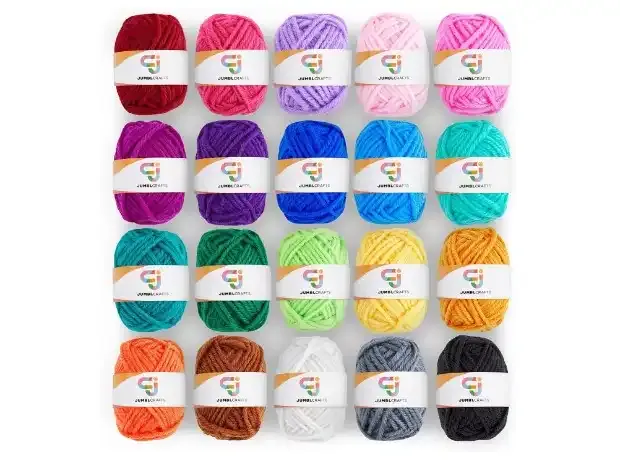Yarn count
Yarn count is a term commonly used in the textile industry to describe the thickness or fineness of yarn. It is one of the most important factors that determine various characteristics of fabrics, including their strength, texture, and appearance.
The yarn count indicates how many lengths (or hanks) of yarn weighing a fixed amount (usually one pound) are required to make up 840 yards. In other words, it refers to the number of times a specific length or weight of yarn can be obtained from a given mass or length.
There are several methods for expressing yarn count, but two systems are predominantly used: direct system and indirect system. The direct system measures the weight per unit length of yarn in grams/meter (G/M), while the indirect system counts the number of hanks per unit weight in pounds (lbs).
Different types and qualities of fabrics require different counts. Generally speaking, finer threads produce smoother and softer fabrics with better drape ability, while coarser threads create rougher materials with more durability. However, it all depends on what kind of fabric is being produced - some textiles like denim require thicker threads for added strength whereas silk requires much finer threads for its luxurious feel.
Yarn count also plays a significant role in determining fabric density as well as garment comfort levels. Knowing how to measure it accurately will ensure that manufacturers can produce high-quality fabrics at competitive prices based on customer needs and preferences.
Overall, understanding yarn count is essential not only for those working within textile manufacturing but also for those who use textile products regularly such as fashion designers and consumers alike. By utilizing proper calculations when measuring thread quality/quantity we're able to improve our production processes which ultimately leads to better experiences for end-users.
Importance of yarn count
The yarn count is a critical factor in textile manufacturing. The term "yarn count" refers to the thickness or fineness of a given yarn. It's usually measured in different units of measurement such as denier, tex, and cotton count. The importance of yarn count lies in its ability to determine various aspects related to textile production like fabric weight, quality, strength, and durability.
One important aspect that is determined by the yarn count is the fabric weight. The finer or thinner the yarn used for weaving or knitting fabrics, the lighter will be the weight. Similarly, thicker yarns produce heavier fabrics. A lower yarn count produces bulkier and coarser texture while higher counts result in fine-textured materials such as chiffon silk.
Moreover, determining the correct yarn size also plays a crucial role in ensuring high-quality textiles with optimal physical properties such as tensile strength and elongation at breakage points. Manufacturers can ensure optimal product quality by using appropriate raw material (fiber) types along with proper spinning techniques which are essential factors affecting both single-strand - monofilament - fibers' physical properties and multi-strand fiber bundles- multifilament yarns characteristics.
Additionally, understanding how to choose different types of thread sizes when working on embroidery projects helps one create intricate designs with subtle detailing since it determines how tightly individual stitches hold together on cloth surfaces during the sewing process.
Another benefit of having accurate knowledge about appropriate Yarn Count selection methods enhances fabric performance properties across several industries ranging from sportswear clothing production where wearability concerns need addressing due to strenuous activities involved; medical textiles requiring specific anti-bacterial qualities alongside maintaining comfort levels throughout use; home furnishings including upholstery fabrics that require durable structures capable enough for daily usage without breaking down over time.
Therefore it’s necessary always to consider selecting suitable Yarn Counts according to intended end-use requirements before embarking upon any manufacturing process regardless if it involves woven or knitted goods.









0 Comments